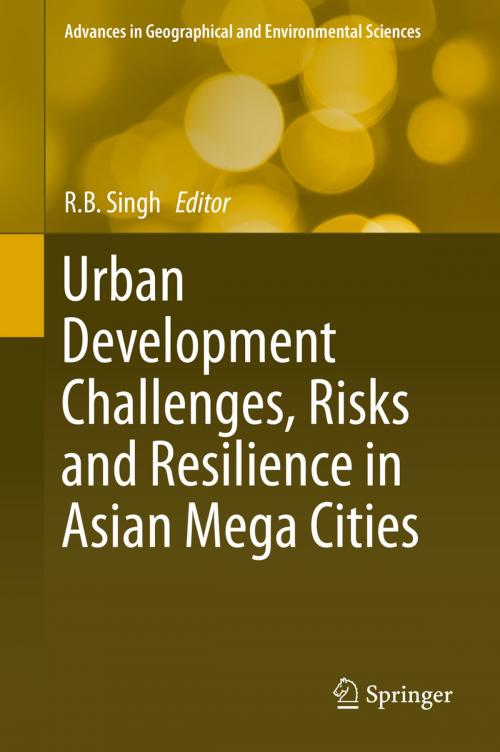Urban Development Challenges, Risks and Resilience in Asian Mega Cities
Nonfiction, Social & Cultural Studies, Political Science, Politics, City Planning & Urban Development, Science & Nature, Science, Biological Sciences, Environmental Science, Nature| Author: | ISBN: | 9784431550433 | |
| Publisher: | Springer Japan | Publication: | October 16, 2014 |
| Imprint: | Springer | Language: | English |
| Author: | |
| ISBN: | 9784431550433 |
| Publisher: | Springer Japan |
| Publication: | October 16, 2014 |
| Imprint: | Springer |
| Language: | English |
In this book, an interdisciplinary research group of faculty members, researchers, professionals, and planners contributed to an understanding of the dynamics and dimensions of emerging challenges and risks in megacities in the rapidly changing urban environments in Asia and examined emerging resilience themes from the point of view of sustainability and public policy. The world’s urban population in 2009 was approximately 3.4 billion and Asia’s urban population was about 1.72 billion. Between 2010 and 2020, 411 million people will be added to Asian cities (60 % of the growth in the world’s urban population). By 2020, of the world’s urban population of 4.2 billion, approximately 2.2 billion will be in Asia. China and India will contribute 31.3 % of the total world urban population by 2025. Developing Asia’s projected global share of CO2 emissions for energy consumption will increase from 30 % in 2006 to 43 % by 2030. City regions serve as magnets for people, enterprise, and culture, but with urbanisation , the worst form of visible poverty becomes prominent. The Asian region, with a slum population of an estimated 505.5 million people, remains host to over half of the world’s slum population . The book provides information on a comprehensive range of environmental threats faced by the inhabitants of megacities. It also offers a wide and multidisciplinary group of case studies from rapidly growing megacities (with populations of more than 5 million) from developed and developing countries of Asia.
In this book, an interdisciplinary research group of faculty members, researchers, professionals, and planners contributed to an understanding of the dynamics and dimensions of emerging challenges and risks in megacities in the rapidly changing urban environments in Asia and examined emerging resilience themes from the point of view of sustainability and public policy. The world’s urban population in 2009 was approximately 3.4 billion and Asia’s urban population was about 1.72 billion. Between 2010 and 2020, 411 million people will be added to Asian cities (60 % of the growth in the world’s urban population). By 2020, of the world’s urban population of 4.2 billion, approximately 2.2 billion will be in Asia. China and India will contribute 31.3 % of the total world urban population by 2025. Developing Asia’s projected global share of CO2 emissions for energy consumption will increase from 30 % in 2006 to 43 % by 2030. City regions serve as magnets for people, enterprise, and culture, but with urbanisation , the worst form of visible poverty becomes prominent. The Asian region, with a slum population of an estimated 505.5 million people, remains host to over half of the world’s slum population . The book provides information on a comprehensive range of environmental threats faced by the inhabitants of megacities. It also offers a wide and multidisciplinary group of case studies from rapidly growing megacities (with populations of more than 5 million) from developed and developing countries of Asia.















